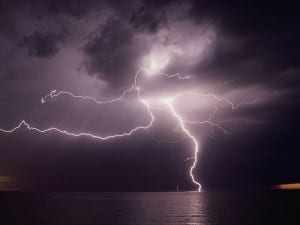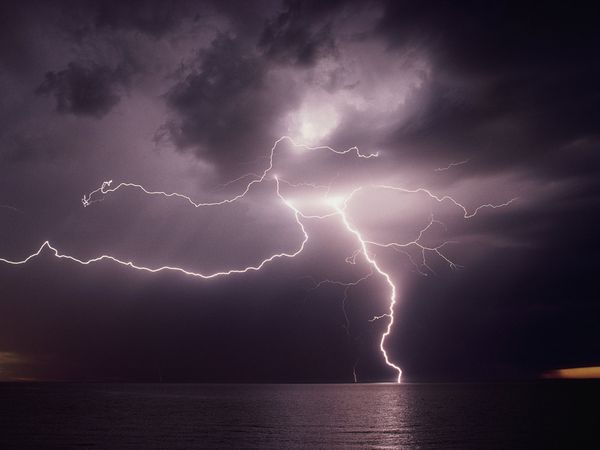 With summer underway, Miami-Dade County residents are greeted with not only hot and humid weather, but also with thunderstorms and their accompanying lightning.
With summer underway, Miami-Dade County residents are greeted with not only hot and humid weather, but also with thunderstorms and their accompanying lightning.
Residents must be aware and understand the dangers of lightning, which is why the Miami-Dade Fire Rescue (MDFR) and the National Weather Service (NWS) want residents to minimize their risk of danger by knowing vital safety tips.
Lightning is one of the top three stormrelated killers in the United States. According to the NWS, from 1959 to 2013 there were 4,025 lightning fatalities in the United States.
Lightning’s unpredictability increases the risk for individuals and properties to be struck.
As stated by the NWS, “When thunder roars, go indoors.” If you hear thunder, you are likely within striking distance of the storm. Avoid the threat by having a lightning safety plan. The following are tips that can ensure your safety when a thunderstorm rolls in:
Stay indoors. If you have any planned outdoor activities, postpone them early. No place outside is safe when thunderstorms are in the area. Take shelter in a sturdy building and avoid isolated sheds or other small buildings in open areas.
Can’t reach a sturdy building? Get inside a hard-topped automobile and keep the windows up.
Outdoors? If outdoors, get off elevated areas such as hills, mountain ridges or peaks. Don’t use a cliff or rocky ledge for shelter. Stay away from bodies of water such as lakes and ponds. Additionally, stay away from objects that conduct electricity such as barbed wire fences and power lines.
Stay alert. Monitor weather conditions to keep informed via your local weather service or a NOAA weather radio.
Avoid contact with electrical equipment. All electrical appliance or cords should be avoided. Unplug appliances and other electrical items such as computers. Furthermore, avoid contact with corded phones and devices that are plugged into wall outlets for recharging.
Avoid plumbing.Do not use any bathroom or plumbing fixture as it can conduct electricity.
Stay away from windows and doors; also stay off porches/patios.
Don’t lie or lean on concrete floors or walls. Don’t stand under or near an isolated tree or group of trees.
Got a tingle? If you feel your skin tingling or your hairs are standing on end, that means lightning is about to strike. Squat low to the ground on the balls of your feet and place your hands on your knees with your head between them. Try to make yourself the smallest target possible and minimize your contact with the ground. Do not lie flat on the ground.
Call 9-1-1 if someone is struck by lightning. When attempting to aid a victim of lightning, it’s important to check the following:
• Breathing — If the victim is not breathing, give mouth-to-mouth resuscitation.
• Heartbeat — If it has stopped, administer CPR.
• Pulse — If the victim is breathing and has a pulse, be alert of other signs of injury such as burns where the lightning entered and left the body, nervous system damage, broken bones and loss of hearing and eyesight.
Residents of Miami-Dade County also must be aware of positive or “out-of-theblue” lightning. Lightning that originates at the top of a thunderstorm carries a positive charge. Positive lightning is particularly dangerous because:
It frequently strikes away from the rain core, either ahead or behind the thunderstorm.
It can strike as far as five to 10 miles from the storm, in areas that most people do not consider to be a lightning risk area.
It has a longer duration, making fires more likely.
It usually carries a high peak electrical current, which increases the lightning risk to an individual.
Although most victims of lightning survive, they often suffer from long-term, debilitating symptoms.
For more information, contact MDFR’s Public Affairs Bureau at 786-331-5200.






